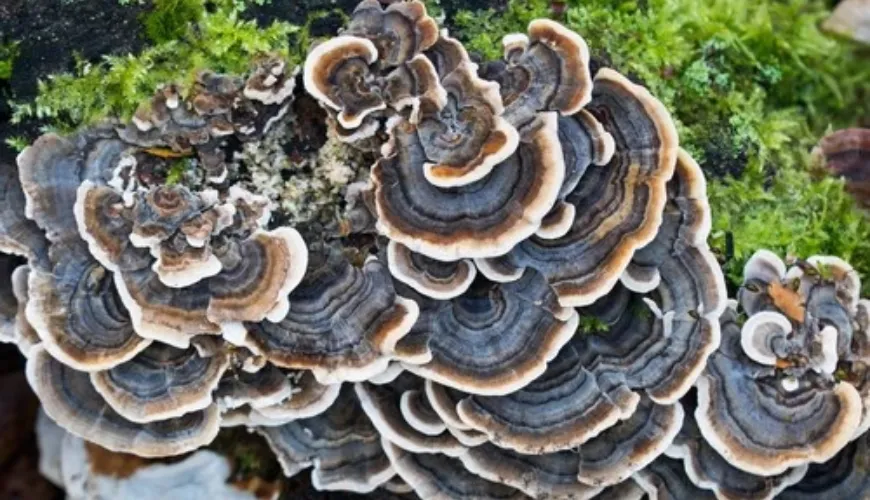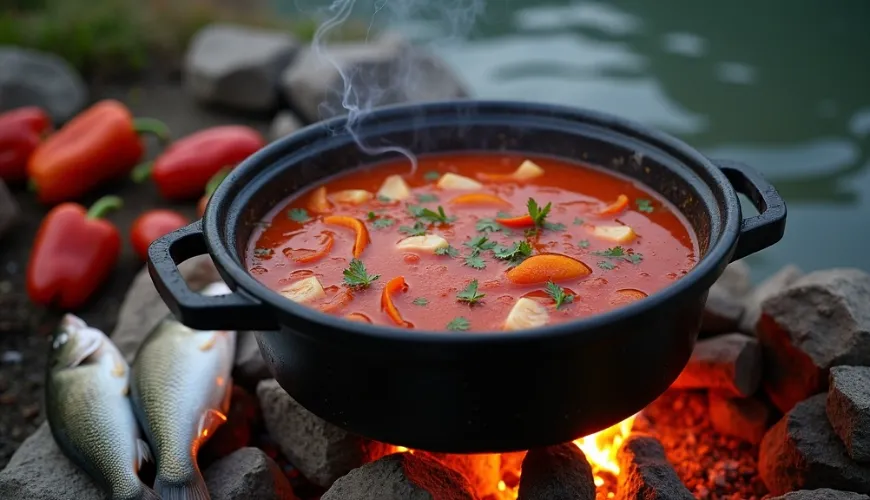
Autumn Hit – Hungarian Bean Soup to Warm You Up

Hungarian Soups - The Heart of Hungarian Cuisine in a Single Bowl
Hungarian cuisine is renowned for its bold flavors, richness, and love for spicy and hearty meals. When Hungary is mentioned, most people think of goulash. However, soups play a truly exceptional role in the Hungarian diet, often reaching the boundaries of a main course. While soup is often just a starter for us, in Hungary, it becomes a full-fledged meal.
From hearty bean soup with smoked meat, through the famous goulash, to the spicy fish soup halászlé – each of these traditional soups bears the imprint of regional history, seasonal ingredients, and the warmth of home. It's no wonder that Hungarian soups are gaining popularity beyond the borders, including in Czech households.
Bean Soup with Smoked Meat - Traditional Meal for Cold Days
Hungarian bean soup with smoked meat is the archetype of homely, hearty cuisine. Known in Hungarian as "Jókai bableves," this soup is named after the famous writer Mór Jókai, who allegedly loved it. Its base consists of large white beans, smoked meat (often pork knuckle or sausage), root vegetables, and distinctive spices – naturally, a paprika base is a must.
The magic of this soup lies in slow cooking, which allows all flavors to meld and shine. The result is a thick, creamy, and fragrant soup that not only satiates but also warms. Some variations include small dumplings made from eggs and flour, which further soften the dish.
In a Hungarian household, it's a common lunch, often served with just a slice of fresh bread. In a Czech setting, it might remind one of something between our classic bean soup and lentil soup, but with an emphasis on the flavor of smoked meat and sweet paprika. In winter, there's no better recipe to warm up – while staying true to a natural and simple composition.
Goulash Soup - A National Treasure in Liquid Form
Hungarian goulash soup (gulyásleves) often gives the impression that it's a thin goulash. In reality, it shares only the spices and basic ingredients with classic goulash. It is a standalone dish with a long tradition among herdsmen (gulyási), from whom its name originates.
The soup is made from beef, onions, paprika, potatoes, and sometimes root vegetables. A key difference between dry goulash and this soup is that it contains significantly more broth, resulting in a dish that is filling yet refreshing. The classic recipe does not use flour or other thickeners – the flavor is concentrated through slow cooking and selecting quality meat.
Goulash soup is often served at various celebrations or markets and in the colder parts of the year serves as a quick and hearty dinner. In many Hungarian families, each generation has its own version – some add garlic, others spicy paprika, and others perhaps a bit of marjoram.
One advantage of this soup is that it can be prepared in a cauldron over a fire. This is exactly how it's cooked in the Hungarian countryside – outdoors, with friends, always emphasizing the quality of the ingredients. As a well-known Hungarian saying goes: "Without onions and paprika, there is no real goulash."
Halászlé - Fish Soup with the Soul of the Danube
Perhaps the most regionally rooted soup in Hungary is the Hungarian fish soup, known as halászlé. Its origins can be traced to fishing communities along the Danube and Tisza, where it was cooked immediately after catching fresh fish. Carp is most commonly used, but also pikeperch or catfish.
Halászlé is known for its deep red color – the result of using a large amount of both sweet and hot ground paprika. The base is a fish broth made from heads and bones, which is then strained, and in the clear broth, fillets and sometimes slices of peppers and tomatoes are cooked.
The taste of this soup is intense, full, and slightly spicy, which will be appreciated by lovers of fish and spicier foods. In Hungary, halászlé is traditionally associated with Christmas – the carp from fish soup then often becomes the main course of Christmas Eve dinner. But even outside the holidays, it's a popular dish, especially at family gatherings or celebrations.
Preparing halászlé isn't complicated, but it requires patience and respect for the ingredients. In Hungary, it's often cooked in a large cauldron outdoors, where the aroma spreads far and wide, attracting not only neighbors but also random passersby.
Tripe Soup Hungarian Style - For the Bold and the Gourmets
Hungarian tripe soup (pacalleves) might be the most controversial dish from the entire range of traditional soups. Although the word "tripe" evokes fear or even disdain in many, in Hungary, it has its firm tradition – much like in our country.
Unlike the Czech tripe soup, which is thickened with flour and flavored with marjoram, the Hungarian version is more spiced, hotter, and often redder thanks to paprika. The tripe is cooked until tender and served in a strong broth along with potatoes or bread. Some versions include an addition of sausage, which gives the soup another layer of flavor.
Interestingly, Hungarian tripe soup is also popular as a "cure" after a night of revelry. Thanks to its high protein content, collagen, and spicy flavor, it is said to "bring life" not only to the body but also to the soul. Despite its challenging reputation, this soup continues to find new fans – and not just in Hungary.
Soups as a Reflection of Hungarian Life
All these traditional Hungarian soups have one thing in common – they reflect the rhythm of everyday life, seasonality, and the availability of ingredients. Rural households have always cooked with what was at hand: beans, potatoes, a piece of smoked meat, fish from the river, or beef from the pasture. The result is dishes that are simple but rich in flavor and deeply satisfying.
Today, as society is rediscovering the magic of slow cooking, returning to traditional recipes, and emphasizing the quality of ingredients, Hungarian soups deserve attention. Not just as exotic food, but as inspiration for cooking honestly, healthily, and with respect for nature.
Visiting an authentic Hungarian restaurant or preparing your own version at home is easier today than ever before. Quality organic vegetables and spices are easy to find, and with a bit of effort, one can find themselves right in the kitchen of a Hungarian grandmother, just a few steps away from their own stove.
And that's where the magic lies – in a soup that is not just a meal, but also a story.

